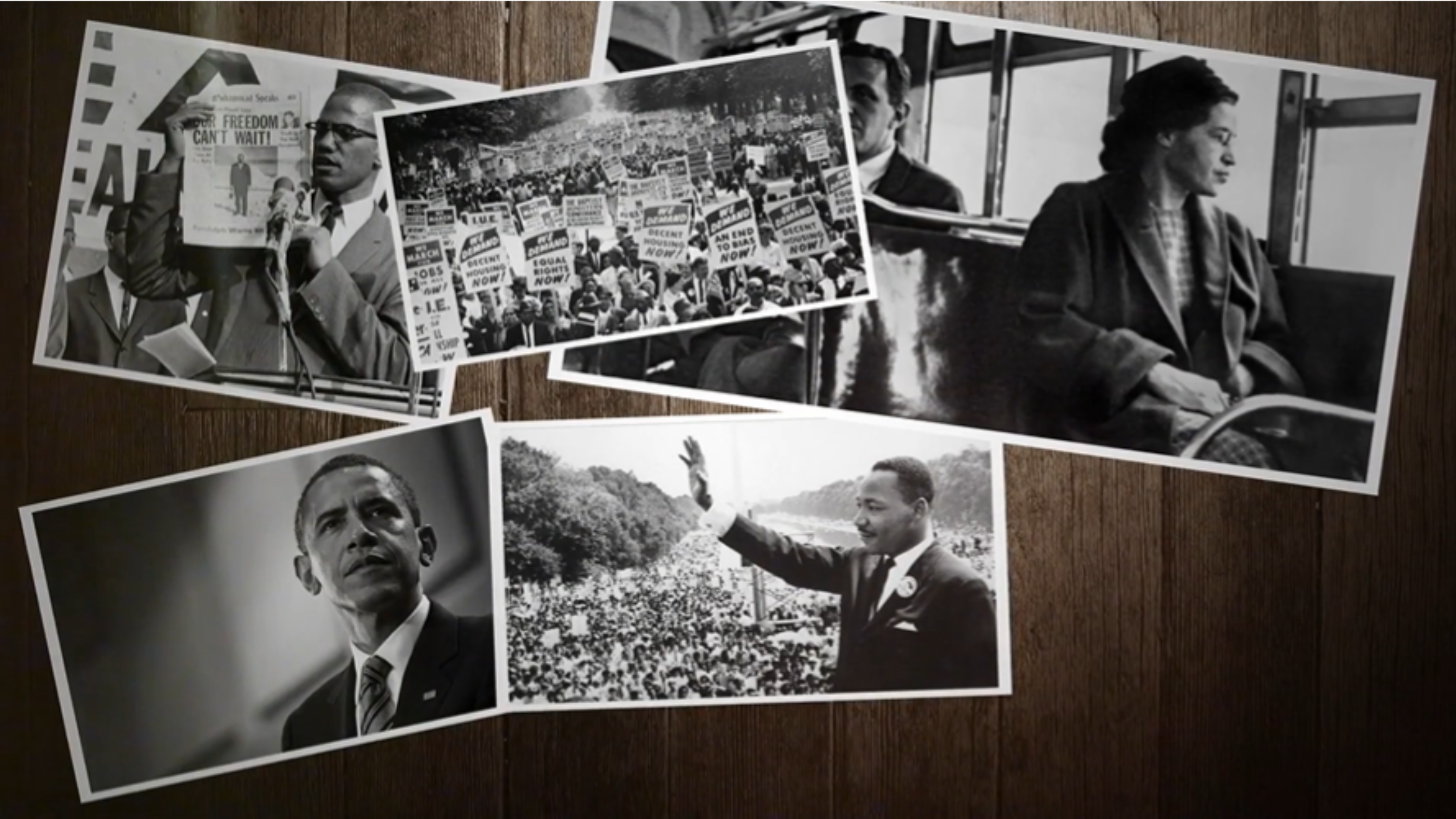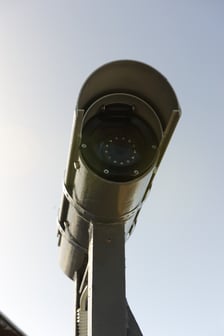TRIR Calculation: How to Calculate Total Recordable Incident Rate
TRIR Calculation: How to Calculate Total Recordable Incident Rate Learn about how to calculate your Total Recordable Incident Rate! TRIR is a metric...
Explore the lasting legacy of African American pioneers in health and safety during Black History Month. Learn about their groundbreaking inventions and contributions to the EHS landscape.

February is Black History Month, a time to celebrate the achievements and contributions of African Americans throughout history.
While often recognized for their work in social justice and the arts, this month also presents an opportunity to highlight Black excellence in science, technology, engineering, and mathematics (STEM) – specifically, in the realm of health and safety. Today, we shine a light on three visionary individuals whose inventions have significantly impacted EHS history.
Garret Morgan wasn’t just a name in a history textbook; he was a multifaceted genius whose life and inventions left an indelible mark on the world, particularly in the realm of health and safety. While his most recognized inventions are the gas mask and the three-position traffic light, his contributions extend far beyond these two iconic creations.
Morgan’s innovation journey began in 1914 when he witnessed a horrific accident involving firefighters trapped in a smoke-filled tunnel. Determined to find a solution, he created the “Safety Hood,” a precursor to the modern gas mask. This wasn’t just a filtering device; it incorporated a flexible tube that allowed wearers to breathe fresh air from the ground, a crucial element in confined spaces. His invention not only saved the lives of those trapped in the tunnel but also became a valuable tool for firefighters, miners, and soldiers facing hazardous environments.
Frustrated by the chaotic and often dangerous intersections of his time, Morgan, in 1923, developed the three-position traffic light. This revolutionary invention, featuring a yellow “caution” signal as an intermediate step between stop and go, significantly improved traffic flow and reduced accidents. His innovation, while initially met with skepticism, eventually became the standard traffic signal system used worldwide, saving countless lives and preventing injuries.
Morgan’s impact went beyond his inventions. He was a successful entrepreneur, founding the National Safety Device Company and showcasing his innovations at international expositions. He was also a strong advocate for racial equality, founding a newspaper and actively participating in the NAACP. His life exemplified the power of a curious mind, a dedication to solving problems, and a commitment to making the world a safer and more just place.
Today, Garret Morgan stands as a beacon of inspiration for aspiring inventors, entrepreneurs, and safety professionals. His story reminds us that innovation can come from anyone, regardless of background or circumstance. His dedication to safety and his unwavering belief in the power of progress continue to resonate, urging us to explore new solutions and build a safer future for all.
Alexander Miles deserves far more recognition than simply being known as the “elevator doors guy.” This African American inventor from Ohio made a significant impact on safety and convenience in the late 19th century, contributing to an innovation that has become an integral part of modern life.
Born in rural Ohio, Miles initially worked as a barber, showcasing his entrepreneurial spirit early on. However, his curiosity and tinkering went beyond haircuts. He experimented with hair care products and even dabbled in real estate, showcasing his diverse interests.
In 1887, while residing in Duluth, Minnesota, Miles witnessed the dangers posed by manually operated elevator doors. Accidents occurring when passengers entered or exited moving elevators were unfortunately common. Driven by a desire to improve safety, he invented an automatic opening and closing mechanism for elevator doors. His design used a flexible belt connected to drums positioned along the shaft, automatically triggering the movement of the doors based on the elevator’s position. This ingenious invention significantly reduced the risk of falls and accidents, revolutionizing elevator safety globally.
Miles’ success extended beyond securing a patent for his invention. He actively marketed his design, securing lucrative contracts with major hotels and buildings across the country. This entrepreneurial spirit allowed him to become a prominent businessman and a wealthy individual, recognized as one of the most successful African Americans in the Pacific Northwest.
Today, while advancements have been made in elevator technology, the core principle of automatic doors remains a cornerstone of safety in vertical transportation. Miles’ contribution continues to impact millions daily, ensuring their smooth and safe travel between floors.
Mary Van Britten Brown isn’t just a name on a patent; she’s an inspiration for anyone seeking safety and a testament to the ingenuity that can blossom in the face of adversity. While her invention of the home security camera system is rightfully celebrated, her story resonates on a deeper level, highlighting courage, resilience, and a pioneering spirit.
Born in Queens, New York, Brown faced racial discrimination and limited opportunities throughout her life. Witnessing the dangers of her neighborhood and concerned about her safety and that of her husband, a night shift worker, she refused to be a passive victim. In 1966, fueled by determination and driven by a desire to protect her family, she embarked on a remarkable journey.
Brown’s home security system wasn’t a high-tech marvel; it was born from necessity and resourcefulness. Her initial design comprised three peepholes positioned at different heights, allowing her to see whoever approached the door without physically opening it. Coupled with a sliding camera connected to a closed-circuit television monitor, she could remotely identify visitors, enhancing her sense of security. This wasn’t just about deterring criminals; it was about empowering her to take control of her safety.
Brown’s innovation didn’t stop at cameras and peepholes. Her system included a remote door unlocking mechanism, allowing authorized personnel like law enforcement to enter in emergencies. This visionary feature addressed not only security concerns but also potential medical emergencies, showcasing her comprehensive approach to safety.
remote door unlocking mechanism, allowing authorized personnel like law enforcement to enter in emergencies. This visionary feature addressed not only security concerns but also potential medical emergencies, showcasing her comprehensive approach to safety.
While securing a patent for her invention in 1969, Brown didn’t stop there. She actively marketed her system, demonstrating her entrepreneurial spirit and paving the way for future security solutions. While her initial target audience was home dwellers, she envisioned its potential for businesses as well, recognizing the broader need for security infrastructure.
Brown’s story transcends the realm of home security. It exemplifies the power of individual initiative, the importance of addressing safety concerns head-on, and the incredible contributions that women, particularly Black women, have made to technological advancements. Her invention laid the groundwork for modern security systems, impacting countless lives and businesses globally.
While focusing on the inspiring stories of Garrett Morgan, Alexander Miles, and Mary Van Britten Brown is important, the contributions of Black pioneers in the health and safety field extend far beyond these three remarkable individuals. Here are some additional figures you might want to consider highlighting:
Norbert Rillieux (1844-1915): This Louisiana-born inventor revolutionized the sugar industry with his multiple-effect evaporator, a more efficient and safer refining process that replaced the dangerous “open-kettle” method. His innovation significantly reduced accidents, improved working conditions, and boosted production in the industry.
Charles Drew (1904-1950): A trailblazing physician and researcher, Drew made groundbreaking contributions to blood plasma research and development. He is recognized for establishing the first large-scale blood bank and pioneering techniques for storing and preserving blood plasma, saving countless lives during World War II and laying the foundation for modern blood transfusion practices.
Patricia Bath (1942-2020): An ophthalmologist known as the “inventor of laser cataract surgery,” Dr. Bath dedicated her career to improving access to quality eye care, particularly for underserved communities. Her development of the laserphaco probe revolutionized cataract surgery, making it safer, more efficient, and accessible to millions worldwide.
Otis Boykin (1928-2008): An inventor and nuclear engineer, Boykin holds numerous patents for advancements in nuclear power technology. He played a crucial role in developing the control rod drive mechanism used in nuclear reactors, ensuring their safe and efficient operation. His contributions helped pave the way for the commercialization of nuclear power.
Katherine Coleman Goble Johnson (1918-2020): This mathematician and NASA pioneer played a critical role in calculating trajectories for numerous space missions, including the Apollo 11 moon landing. Her remarkable accuracy and meticulous calculations ensured the safety of astronauts and helped propel humanity’s exploration of space.
George Washington Carver (1860-1943): An agricultural scientist and inventor, Carver is known for his research on alternative crops and their diverse uses. He developed over 300 products from peanuts, sweet potatoes, and soybeans, promoting sustainable farming practices and providing valuable food alternatives, particularly during times of scarcity.
Mae Jemison (born 1956): The first Black woman to travel to space, Dr. Jemison is a physician, author, and science advocate. Her journey and commitment to science education inspire future generations and encourage diversity in STEM fields.
The Lasting Legacy of African American Contributions to the EHS Landscape
As we celebrate Black History Month, let’s acknowledge and appreciate the significant contributions of African Americans to health and safety. Their vision, ingenuity, and dedication to improving lives continue to shape the EHS landscape and inspire us to create a safer and more secure future for all.
TRIR Calculation: How to Calculate Total Recordable Incident Rate Learn about how to calculate your Total Recordable Incident Rate! TRIR is a metric...
Lost Time Injury rate refers to incidents that result in a disability or an employee missing work due to an injury. Learn more about how to calculate...
Learn how EHS leaders are adopting smarter tech like AI, cloud platforms, and mobile tools to reduce risk and streamline safety processes.
Subscribe to our blog and receive updates on what’s new in the world of EHS, our software and other related topics.